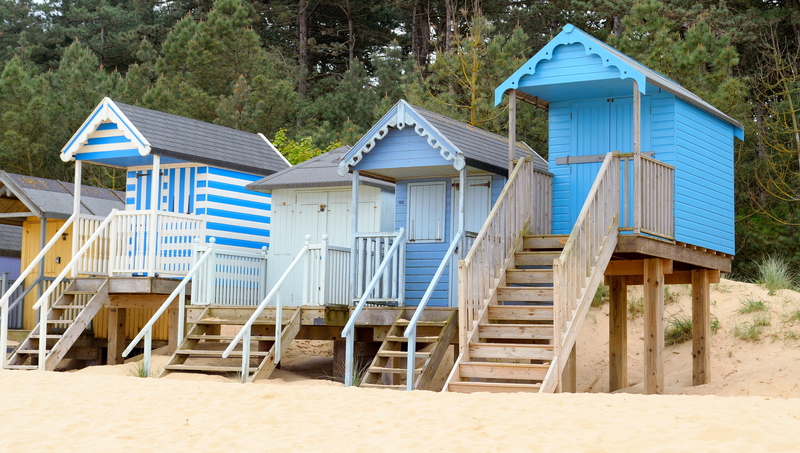Packing Hacks for a Hassle-Free House Relocation
Posted on 22/06/2025
Packing Hacks for a Hassle-Free House Relocation
Moving to a new house marks the start of an exciting adventure, but it's often also riddled with stress and endless to-do lists. Packing up your entire life can feel overwhelming, but with the right tips and strategies, you can streamline your move and enjoy a smooth transition into your new home. In this comprehensive guide, we share the most practical packing hacks for a hassle-free house relocation so you can organize, pack, and unpack with ease.
Why Packing Strategically Matters
The way you pack will set the tone for your entire house relocation journey. Efficient packing can help you:
- Save time and money
- Avoid damage to your belongings
- Reduce moving day stress
- Unpack more quickly in your new home
Follow these smart packing hacks and your next move will be more manageable and even enjoyable!

Getting Started: Planning is Half the Battle
1. Start Early
One of the best secrets for a hassle-free move is to start packing weeks in advance. Aim to begin at least four weeks before your move date. Create a moving checklist and a timeline to keep you organized and on track.
2. Declutter and Downsize
You don't want to move items you no longer need or use. Take time to purge unnecessary belongings by:
- Donating items to charity
- Hosting a garage sale
- Selling items online
- Recycling or responsibly disposing of broken items
The less you have to pack, the faster and easier the process will be.
3. Gather Quality Packing Supplies
No one wants to open a box of broken dishes or shattered glass. Prepare by collecting these essential packing materials:
- Sturdy moving boxes (various sizes)
- Bubble wrap, packing paper, and foam peanuts
- Heavy-duty packing tape and dispensers
- Permanent markers for labelling
- Scissors or box cutters
- Stretch wrap or plastic wrap for securing drawers and furniture
- Ziplock bags for small parts
- Old towels, blankets, and clothes for cushioning
Source boxes for free from supermarkets or ask friends and family, but make sure they are clean and sturdy.
Room-by-Room Packing Hacks
4. Pack by Room, Not by Random Item
The most efficient moves happen when you organize and pack one room at a time. This makes unpacking easier since similar items stay together. Label each box with the room name and a brief list of contents for quick identification.
5. Use a Color-Coding System
Save time and confusion by assigning each room a unique color. Use color-coded labels, stickers, or colored tape so that movers know exactly where to place each box in your new home. For example:
- Blue: Kitchen
- Red: Living room
- Green: Master bedroom
6. Pack an 'Essentials' Moving Box
Prepare a box (or suitcase) with items you'll need immediately upon arrival, such as:
- Basic toiletries (toothpaste, soap, towels)
- Change of clothes and pajamas
- Essential electronics and chargers
- Medications and first aid kit
- Important documents (passports, contracts, IDs)
- Coffee maker or water bottle
- Snacks and pet supplies
Keep this box with you, so you don't have to search through dozens of cartons your first night.
Smart Packing Techniques for Every Item
7. Master the Art of Wrapping
- Plates: Stack plates vertically (like records) in boxes with plenty of padding. Use bubble wrap or packing paper between each plate.
- Glasses and mugs: Stuff them with socks or paper, and wrap them thoroughly.
- Clothes: Keep clothes on hangers and group them together in garbage bags or wardrobe boxes for easy transfer.
- Jewelry: Use egg cartons, pillboxes, or small ziplock bags to keep items separated and tangle-free.
- Books: Pack books in small boxes so they aren't too heavy. Lay them flat to protect the spines.
8. Use What You Already Have
- Luggage and backpacks: Fill your suitcases and bags with clothes, shoes, or heavy items.
- Baskets, laundry hampers, and bins: Use these for packing linens, bathroom items, or odds and ends.
- Pots and pans: Store small kitchen gadgets and spices inside for efficient use of space.
9. Seal Liquids and Prevent Leaks
Before packing kitchen or bathroom liquids, take these steps:
- Unscrew the lids, cover the openings with plastic wrap, then screw lids back tightly
- Seal bottles in ziplock bags for extra protection
This prevents messy spills and damage to other packed items.
10. Label Everything Clearly
Be as descriptive as possible! Instead of just writing "Kitchen", specify "Kitchen - Pots and Pans" or "Bathroom - Towels & Rugs". Use permanent markers, and label all sides of the box for easy visibility.
How to Avoid Common Packing Mistakes
11. Don't Overpack Boxes
Avoid injuries and box breakage by keeping boxes under 20kg (45lb). Especially with books and heavy items, distribute weight evenly and fill gaps with soft items such as towels.
12. Secure the Bottoms of Boxes
Reinforce the bottom of every box with extra tape. For fragile or heavy boxes, use double layers of tape in a crisscross pattern for added strength.
13. Take Photos Before Disassembling
If you're taking apart furniture, electronics, or other complicated items, snap photos of their assembled state before you start. These images will be invaluable when you're putting things back together in your new home.
14. Bag Screws and Small Parts
Place all screws, bolts, or cords in labeled ziplock bags and tape them directly to the corresponding furniture pieces for easy reassembly.
Unpacking Made Easy
15. Prioritize Which Boxes to Open First
Begin with your essentials box and then kitchen, bathroom, and bedroom items. Leave decor and non-essentials until last.
16. Clean as You Unpack
Wipe down drawers and shelves before placing your belongings in them, ensuring that your new space is clean and organized from day one.
17. Involve Your Family and Have Fun
Assign each family member a room or category of items to unpack. Play your favorite music and turn unpacking into a positive, shared experience!
Bonus Tips: Moving Day and Beyond
18. Keep Valuables Safe
Carry jewelry, heirlooms, and vital documents with you in a secure bag, rather than placing them on the moving truck.
19. Confirm All Moving Details
Double-check your moving date, address, and contact information with your chosen moving company a few days before you relocate. Reserve elevators and parking if needed at both locations.
20. Be Flexible and Patient
No matter how well you plan, unexpected issues may arise. Stay calm, adapt as needed, and remember that moving is a process.
Frequently Asked Questions About Packing for a House Move
How early should I start packing for a house move?
Begin packing 4-6 weeks before your move if possible. Start with out-of-season items and non-essentials, then finish with daily-use items closer to your moving day.
What materials work best for protecting fragile items?
Use a combination of bubble wrap, packing paper, clothes, towels, and even newspaper to cushion breakables. Double-box extremely valuable items for maximum safety.
How do I make unpacking easier after relocation?
Label every box clearly with its destination room and contents. Prioritize unpacking essentials and don't rush--set up one room at a time for better organization and less stress.

Conclusion: Relocate With Confidence
House relocation doesn't have to be overwhelming. By applying these packing hacks for a stress-free move, you can protect your belongings, stay organized, and even enjoy the transition to your new home. Remember, preparation, organization, and a positive mindset are your most valuable tools. Happy moving!



